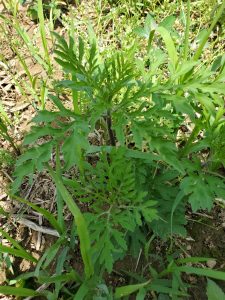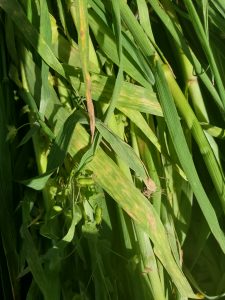
Corn and soybean crop emergence and stand populations are looking good across the county.
Corn: Much needed rainfall in recent weeks has invigorated field crop plantings. From emergence to four leaf stage corn will uptake 3.0 inches of water if available. The water holding capacity of the soil is a key indicator of current and future crop stress. The recent rains brought 2 to 3 inches of preciptation to most of the region and field crops have recovered from moisture stress. Corn growth stages in the region range from planting through five leaf stage. By V8 which is eight leaves with collars, corn needs another 3 inches of rainfall for maximum vegetation growth. With high heat in the forecast and periodic rainfall expectations of 20% to 60%, corn will rapidly consume available moisture. Side dress nitrogen applications are generally targeted to corn between V6 and V8. To learn more about V staging corn see this 2019 article by colleague Jarrod Miller on the Delaware Agronomy Blog. https://sites.udel.edu/agronomy/2019/05/22/corn-leaf-stages-and-growing-degree-days-may-20-2019/
Corn weeds: Overall weed supressions looks good in most fields at this time. Large seeded annuals like jimson weed, common ragweed, ivy leaf morning glory and nutsedge are making a presence but few escapes were seen. Crabgrass and italian rye grass are at opposing stages with italian ryegrass headed and crabgrass emerging.
Soybeans: Ivyleaf morning glory emergence is keeping pace with soybean emergence. Fields with a known history of ivy leaf will require continous evaluation to monitor escapes from soil applied herbicides. To read more about ivy leaf, see the plant pest advisory post https://plant-pest-advisory.rutgers.edu/monitor-field-edge-and-in-field-large-seeded-weed-emergence-pattern/
Potatoes: Colorado potato beetles are present in early flowering potato fields and just beginning to breed. Potato fields look excellent.
Wheat: Wheat stands are showing the effects of the rain decifit this spring. Vegetative biomass varies widely and reflects the delays and field conditions of last fall’s excessive moisture. Foliar diseases and powedery mildew along with early season moisture stress impacting grain weight is present in some plantings. Sporadic patches of mature italian ryegrass and orchargrass heads are present in some fields.
